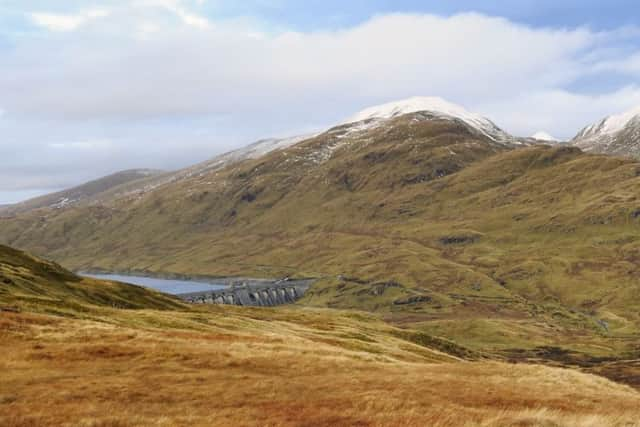'˜Holy grail' hydropower plan unveiled for Scottish lochs
The proposal to create a 450-megawatt pumped storage hydro scheme near Dores, on the east shore of Loch Ness, has been lodged with Scottish ministers.
Named Red John, the development will use excess power generated by wind farms to draw water from the loch and pump it to a specially created head pond in the hills above.
Advertisement
Hide AdAdvertisement
Hide AdThe stored water can then be released through tunnels to generate hydro electric power quickly at times when it is needed.


The scheme, from Hamilton-based Intelligent Land Investments (ILI), will provide 2.8 gigawatt-hours of storage capacity for the grid over a six-hour period. It will also have “black start” ability, meaning it can immediately begin producing power if there is a sudden shutdown of supply.
The two new proposed developments will be even more powerful than Red John – 600MW at Loch Tay and 520MW at Loch Awe.
The three ILI schemes are part of a total 4.1GW of new pumped storage hydro in development across the UK, all of it in Scotland except a 100MW scheme in Wales.
There are already two pumped storage hydro plants operating north of the border – the 440MW Cruachan “hollow mountain”, near Dalmally in Argyll, and the 305MW Loch Mhòr, at Foyers in Inverness-shire.


The technology has been around for more than a century but industry experts believe the modern schemes could be a game-changer in the move to green power.
The main drawback of renewable energy schemes such as wind farms is intermittency of supply – they cannot generate power when the wind doesn’t blow. Conversely, turbines often need switched off when winds are strong but demand is low.
Pumped storage has been hailed as the “holy grail” in the quest for energy security.
Advertisement
Hide AdAdvertisement
Hide Ad“Pumped storage is still quite under-recognised,” said Mark Wilson, chief executive of ILI. “It’s just not out there – nobody has shone a torch on it. But it’s so simple. When you don’t need power, or when power’s cheap or would go to waste, you use it.
“Millions of pounds a year is wasted on curtailment payments when turbines are switched off. Rather than doing that you can use the wind energy to power the water back up the hill to the top reservoir. So you are mitigating against curtailment wastages.
“Then, when power is required at peak times, you just let the water go back down to the bottom reservoir – it goes through the turbines, creates energy and powers the system. That happens all day every day.
“Pumped storage is completely efficient. It’s clean. It gives energy security because you’re not having to import gas from Europe. The energy is always there to be able to store it. That’s why they call it the holy grail.”
Scotland’s climate and landscape make it well suited for pumped storage hydro.
Fabrice Leveque, senior policy manager at industry organisation Scottish Renewables, said: “Scotland’s plentiful rainfall often dampens spirits but it acts as one of the country’s best renewable energy resources, utilised by one of our most popular, well-established green energy technologies – hydro.
“Scotland’s geography provides many suitable locations for large pumped storage hydro schemes so it’s excellent to see such a strong pipeline of projects on the horizon.”